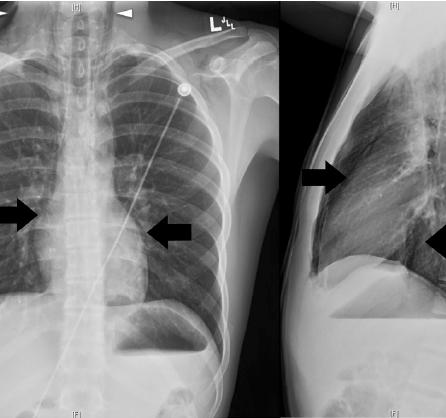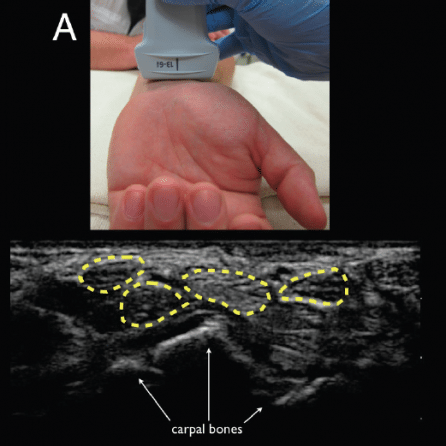| Author | Affiliation |
|---|---|
| Daniel C. Cheng, MD, MPH | Los Angeles County + USC Medical Center, Department of Emergency Medicine, Los Angeles, California |
| Phillips Perera, MD | Los Angeles County + USC Medical Center, Department of Emergency Medicine, Los Angeles, California |
A 45-year-old nonlactating female presented to the emergency department (ED) fast-track area with a chief complaint of breast pain associated with redness. The symptoms occurred over a period of weeks. There were no constitutional symptoms of fever, chills, or weight loss. The patient had no known personal or family history of breast cancer. On physical examination, there was a 6- by 3-cm confluent area of erythema involving both lower quadrants of the breasts without dimpling. There were no palpable masses, areas of fluctuance, or discharge expressed from the areola. However, it was notable that the patient had large nonaugmented breasts that were difficult to examine. These findings were thought to be most consistent with infectious mastitis, and the patient was started on antibiotics for observation in the ED.
On reexamination of the patient, given the difficulty of direct manual evaluation, ultrasound of the breast was performed with a high-frequency linear array ultrasound probe. A 4- by 4-cm complex structure with both solid and cystic components was visualized 1 cm below the area of erythema (see Movie Clip, online only). The patient was then admitted for evaluation of possible breast cancer versus deep tissue abscess. Initial fine-needle aspiration biopsy revealed diffuse lymphocytic invasion that was nonspecific. However, a later ultrasound-guided core-needle biopsy revealed infiltrating ductal carcinoma.
Distinguishing between breast pathologies, such as simple infectious mastitis, breast abscess, or a malignant condition, can be quite challenging in the ED. A recent study of 127 adult mastitis complaints revealed that only 25% actually represented true simple infectious mastitis. Another 40% were found to be an abscess, and 6% represented a malignant condition.1 Currently, there is a growing body of literature that identifies ultrasound as being a more sensitive modality in identifying more complicated conditions, such as malignancy, from simple mastitis.2–3 Mammography, while more specific, is often difficult to obtain from the ED. Furthermore, the National Comprehensive Cancer Network endorses ultrasound alongside mammography as a class IIA screening modality for breast cancer with breast skin changes in their 2010 guidelines.4 This case demonstrates that the potential use of bedside ultrasound by emergency physicians can be a rapid and helpful diagnostic tool in differentiating an uncomplicated infectious condition, mastitis, from more complex pathology, such as breast cancer, that was ultimately diagnosed in this patient.
Footnotes
Supervising Section Editor: Sean Henderson, MD
Conflicts of Interest: By the WestJEM article submission agreement, all authors are required to disclose all affiliations, funding, sources, and financial or management relationships that could be perceived as potential sources of bias. The authors disclosed none.
Reprints available through open access at http://escholarship.org/uc/uciem_westjem
Address for correspondence
Daniel C. Cheng, MD, MPH
Los Angeles County&USC Medical Center, Department of Emergency Medicine
1200 N State St, Los Angeles, CA 90033
E-mail:cheng808@gmail.com
REFERENCES
1. Kamal R. Classification of inflammatory breast disorders and step by step diagnosis. The Breast J.2009;15:367.
2. Gupta R. The role of ultrasound in the management of inflammatory disorders of the breast. Med Principle Pract. 1999;8:51.
3. Berg W. Combined screening with ultrasound and mammography vs mammography alone in women at elevated risk of breast cancer. JAMA. 2008;299:2151. [PMC free article] [PubMed]
4. National Comprehensive Cancer Network. Breast cancer screening and diagnosis. 2011 Available at:www.NCCN.org. Accessed June 2011.





You must be logged in to post a comment.